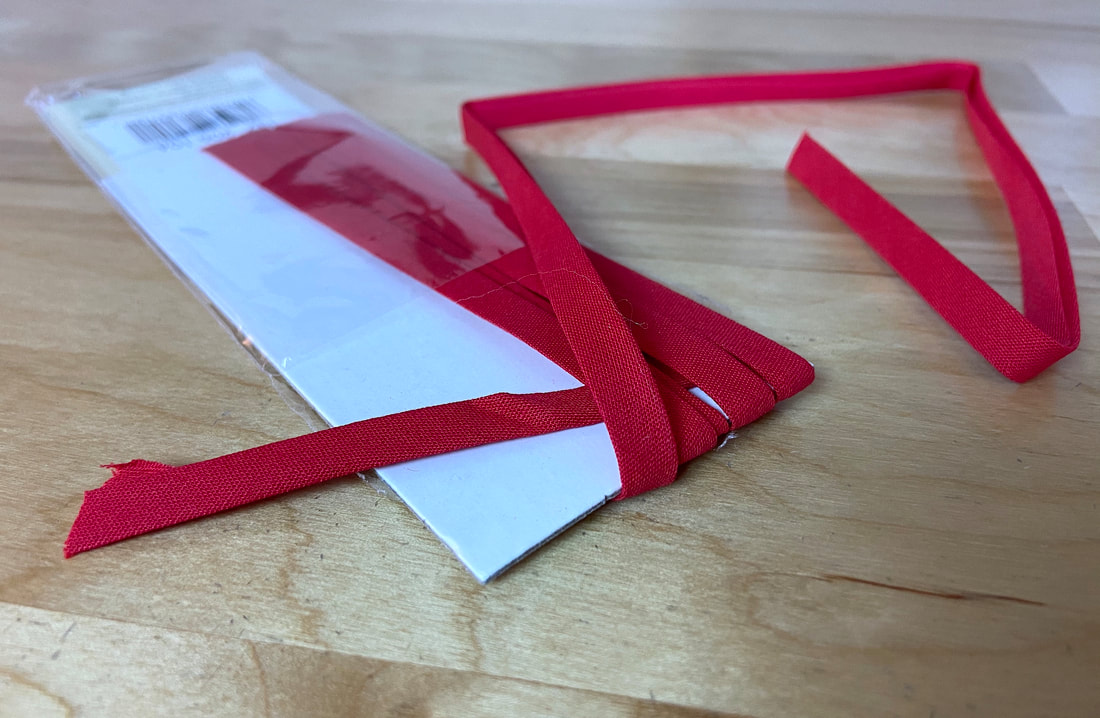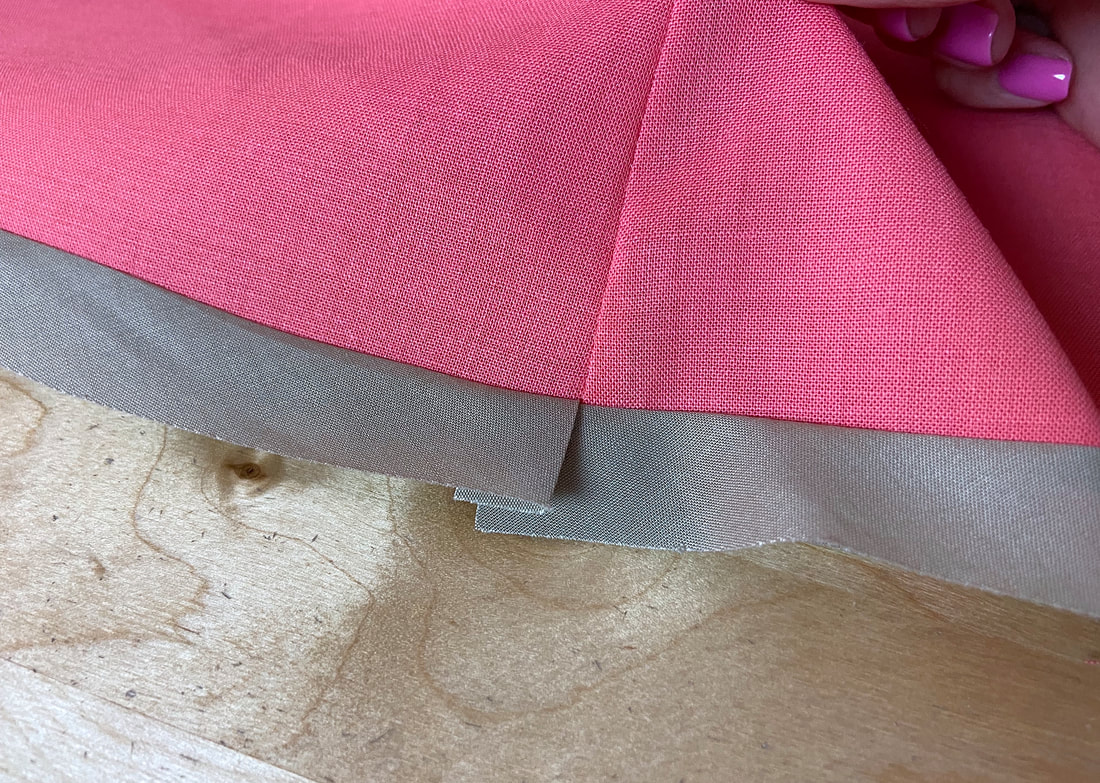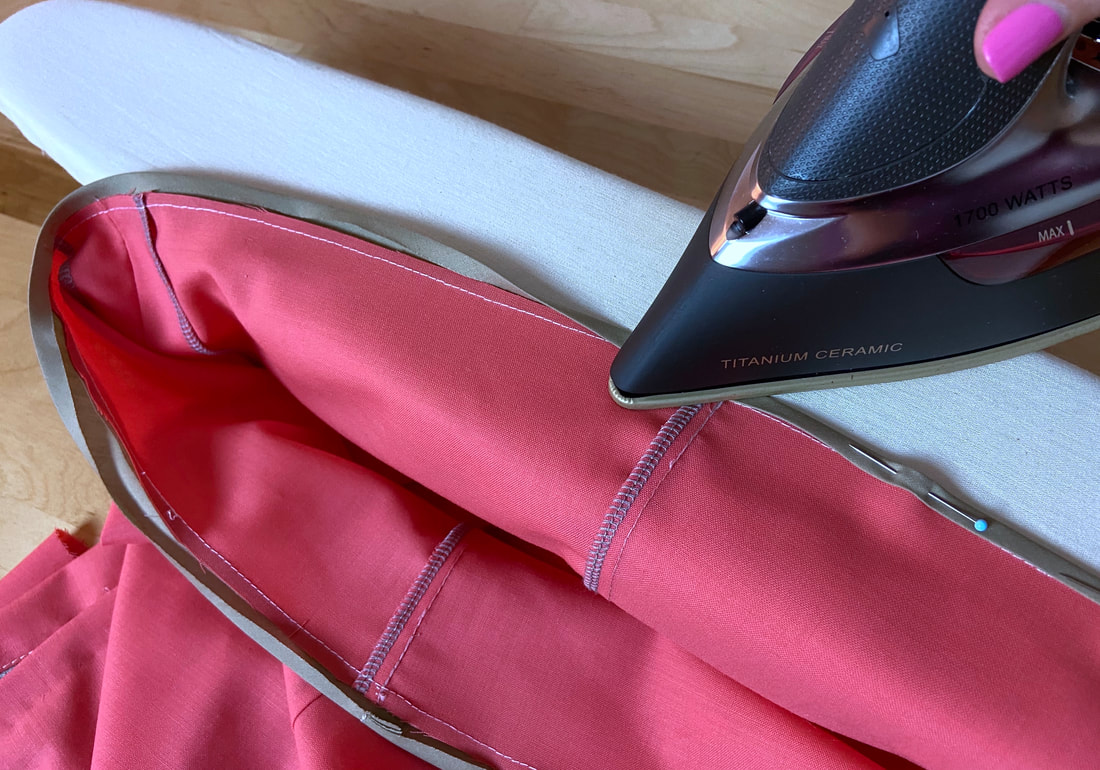What Is A Bound Hem And Types Of Binding Used In Dressmaking
A bound hem finish can be used both to encase the exposed hem edges as well as to add a decorative element to the bottom edge of a garment. Bound hemlines are completed using bias binding. Binding provides a great way to effectively encase fabric raw edges. Once encased, the hem allowance edge can be finished in a folded-up style or left exposed for a decorative hemline finish.
A folded bound hem is not visible on the face of the garment, thus it provides a purely functional purpose. On the other hand, an exposed bound edge is considered a decorative finish even though it also serves as a means to encase fabric raw edges and prevent them from fraying.
Due to its flexible, semi-stretch and moldable characteristic, bias binding works well with curved edges.
A bound hem provides a clean look on both the face and wrong side of the garment. For that reason, it is a great finish for high-low hemlines and/or reversible garments.
Bias binding can be made at home (recommended) or store-bought in a pre-packaged, pre-folded style. Given that pre-packaged options are limited in terms of fabric and color availability, making your own binding to match the garment’s fabric and color, is highly recommended.
Whether you want to achieve a color contrast or a perfectly matched bound hemline, you can cut and sew a continuous binding strip from any fabric of your choice following the steps in this tutorial:
Keep in mind that the fabric you choose for your hem binding should not be heavier or bulkier than that of the garment as this will not only weigh down the hem, it will also affect its drape. For best results, choose a thinner, lighter fabric for the binding.
There are three main types of bis binding. All three are perfectly appropriate to use for hemming a garment.
Single layer bias binding: With a single layer binding, the bias fabric strip is cut at four times the width of the finished folded application. It is stitched to the edge it finishes as a single fabric strip and folded twice in the construction process.
Double layer binding: A double layer binding is cut six times the width of the completed binding application. Before it is attached to the fabric edge, it is folded lengthwise down the center. After the folded binding is attached to the garment edge, it is folded once more to encase the fabric raw edge.
Pre-packaged binding: Pre-packaged binding is pre-folded in a single fold or double fold style such that it can easily be placed over the fabric edge and topstitched for finishing. A double fold binding is the one used most commonly for encasing raw edges. This pre-folded binding is not perfectly folded down center. It has a slightly longer side which as you’ll see below, facilitates the topstitching process.
When it comes to your finished hem, it is up to you whether you’ll be folding the bound hem allowance up or leave it exposed. Keep in mind that a folded bound hemline requires hem allowance while the exposed version does not. More on this below!
Sewing An Exposed Single Layer Bound Hem
Due to the exposed nature of this bound finish, the hem allowance is trimmed off before attaching the single layer bias binding.
1. If not already marked on the fabric, measure the hem allowance length from the bottom cut edge up, and mark the hemline along the entire garment bottom.
2. Carefully cut the hem allowance off. If the crossing seams have already been sewn, you will have to cut through them.
It is good practice to reinforce the bottom of each cut seam with a machine stitch (as shown) prior to proceeding with the binding application.
3. Decide on the desired width of the binding and cut bias strips four times this width. In this tutorial, the final binding application will be ¼” wide, thus the initial bias strip is 1” (1/4” x 4).
Follow the steps in this tutorial to measure, mark and cut bias strips that will provide enough length to cover the entire hem edge: How To Sew Continuous Bias Binding
Sew the strips together to form continuous binding if needed.
4. To attach the single layer binding, fold the end of the bias strip at ½”, and working from the face of the garment, align the bis folded end to one of the garment seams. Match the lengthwise edge of the binding to that of the hem edge and insert a pin horizontally to secure.
5. Align and pin the bias binding strip along the entire edge of the hem. Insert the pins perpendicular to the edge as shown above.
6. When arriving at the starting fold, overlap the end of the bias strip by about ½” and trim the excess off. Insert a pin to hold the layers in place.
At this point, you may want to consider hand basting the single layer binding to the hem edge for extra security during machine stitching.
7. Machine stitch at a distance equal to the finished width of the binding (1/4” in this case). Remove the hand basting once stitched, if any.
8. Iron the binding and seam allowance away from the garment along the entire hem.
The starting fold will overlap and enclose the end of the binding. Slipstitch the folded end of the binding to the trimmed end underneath.
9. Fold the unstitched lengthwise edge of the binding in such that its edge abuts the hem's cut edge as shown. Iron this fold to crease.
10. Fold one more time over the hem allowance edge to enclose all fabric raw edges. Iron and insert pins to hold the fold in this position. Continue along the entire length of the hem.
11. Hand baste the final folded binding in this position prior to stitching, especially if working with lightweight, slippery fabrics.
12. To finish the binding, slipstitch the binding fold to the wrong side of the garment layer using matching thread.
You can learn more on how to apply a slipstitch in this tutorial: Hand-Applied Blind Stitches
13. As a final step, remove the hand basting and iron the finished bound hemline.
To machine stitch the binding, you can topstitch it closed from the right side of the hem, following the binding seam as a guide.
To learn how to sew a double layer bound hem and a folded-up bound hem with pre-packaged binding, follow the steps in these tutorials:






























